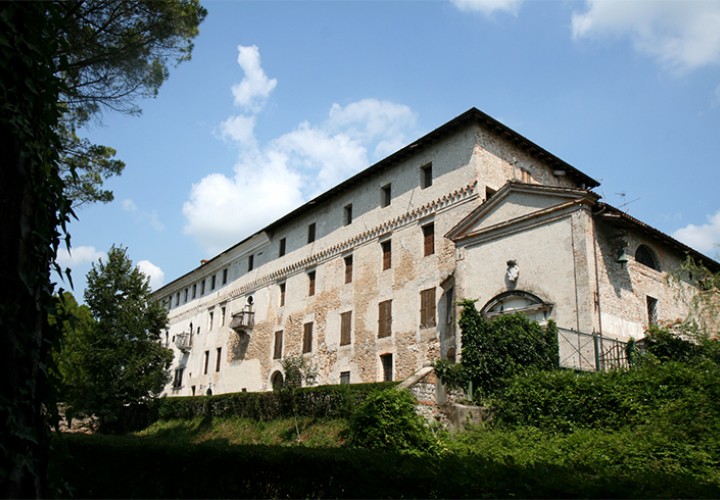The Castle of Zoppola

The name of the place is documented back in 1103, while no one knows exactly when the original castle was built. It was erected for defensive purposes near the watercourse of the Meduna river, probably around the year one thousand.
Standing in a flat area, it was difficult to defend, that is why it had various defensive systems that were built right at the beginning, such as two moats, three circles of wall, gates and towers. Since 1405 the manor has been owned by the Panciera family, who had implemented some work to improve the wall and defensive structures. In 1567, Gerolamo da Porcia, a historian, describes it as a “castle with three moats, but almost no houses inside, except that of the magnificent lords, who dwell in the last circle of wall.
The modernisation project of the Panciera Counts also included the artistic and decorative aspect of the castle, which was embellished with works of art and antique furniture. Particularly interesting are the frescoes inside the courtyard by Amalteo Pomponio, who frescoed arches and balconies, while inside, frescoed rooms have been preserved (interesting paintings in the “Studio del cardinale” - Study of the cardinal, attributed to Giovanni da Udine) and panelled ceilings (in one of the living rooms are the crests of the parliamentary families of Friuli), carved jambs attributed to the work of Pilacorte or to his school, furniture and furnishings.
The main front of the castle within the first moat that can be crossed by a bridge, appears to be quite impressive because it is quite long and high. There are plenty of decorative elements, including three balconies of the sixteenth century with round arches and stone balconies (one supported by corbels with lion heads) and a row of small wall arches and traces of frescoes along the line of eaves.
The buildings of the XV-XVII century that form the fortified village and a large park created in the mid-nineteenth century are all part of the castle complex.
